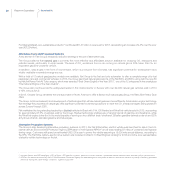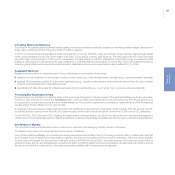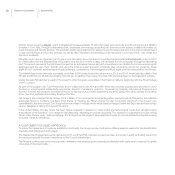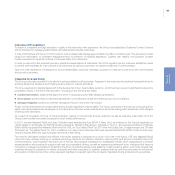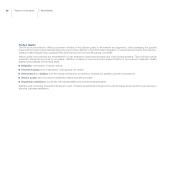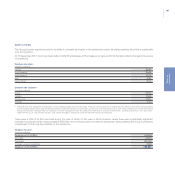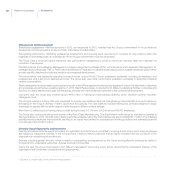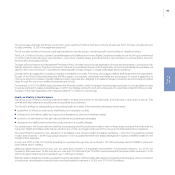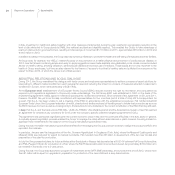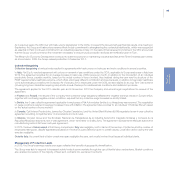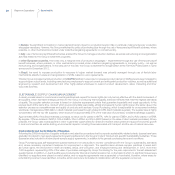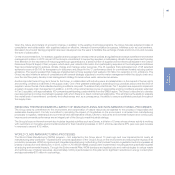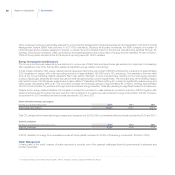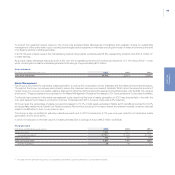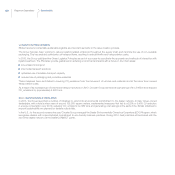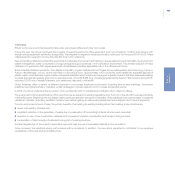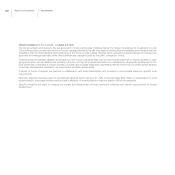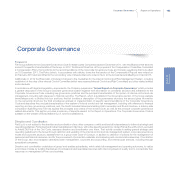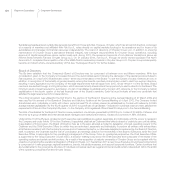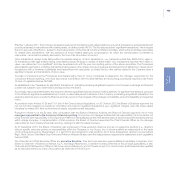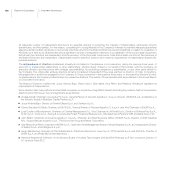Chrysler 2013 Annual Report Download - page 97
Download and view the complete annual report
Please find page 97 of the 2013 Chrysler annual report below. You can navigate through the pages in the report by either clicking on the pages listed below, or by using the keyword search tool below to find specific information within the annual report.
96 Report on Operations
In Europe, the significant contraction in market demand had an impact on production levels in Italy, in particular, making temporary production
stoppages necessary. However, the Group maintained its policy of protecting jobs through the use of temporary layoff benefit schemes, where
possible, or other mechanisms provided under collective bargaining agreements or company policy.
In Italy, use of temporary layoff benefit schemes enabled the Group to manage production declines, as well as restructuring and reorganization
activities related to the Group’s investment programs.
In other European countries, there was only a marginal level of production stoppages – implemented through the use of temporary layoff
benefit schemes, where possible, or other mechanisms provided under collective bargaining agreements or company policy – as well as
restructuring and reorganizations. In the early part of the year, the Group completed the reorganization at the Fiat Auto Poland plant in Tychy
announced in December 2012.
In Brazil, the need to increase production in response to higher market demand was primarily managed through use of flexible labor
mechanisms already in place and reorganization of shifts, based on union agreements.
Chrysler Group increased vehicle production at its NAFTA facilities in response to increased product demand. Staffing levels were increased to
support higher output levels, including manufacturing employees to support current and anticipated production volumes, as well as additional
engineering, research and development and other highly-skilled employees to support product development, sales, marketing and other
corporate activities.
SUSTAINABLE SUPPLY CHAIN MANAGEMENT
A robust process based on sound environmental practices and respect for human rights can only be truly effective with the direct involvement of
all suppliers, which represent strategic partners for the Group in producing technologically advanced vehicles that meet the highest standards
of quality. The supplier selection process is based on objective assessment criteria that guarantee impartiality and equal opportunity in the
process itself. At the same time, conduct which is environmentally responsible, ethical and respects human rights is given the same value in the
selection process as competitiveness and quality of products and services. Group Purchasing, which is responsible for procurement activities
worldwide, manages about €45 billion in direct materials purchases through a base of 2,884 direct materials suppliers. The supplier base is highly
concentrated, with the top 184 suppliers, which account for approximately 57% of the total value of purchases, considered strategic suppliers.
Approximately 69% of the direct materials purchases, by value, are for plants in NAFTA, 19% for plants in EMEA, and 12% for plants in LATAM.
By supplier, 73% are located in NAFTA, 19% in EMEA, 3% in LATAM, and 5% in APAC (based on the value of direct material purchases). Where
possible, the Group uses local suppliers in order to generate opportunities for direct and indirect employment and support economic growth
in local communities, as well as limiting environmental impacts, including those associated with transport and the use of natural resources.
Environmental and Social Impacts of Suppliers
Following the 2009 introduction of supplier evaluation and selection procedures that incorporate sustainability-related criteria, clauses have been
gradually introduced to new supply agreements requiring adherence to the Group’s Code of Conduct and specific Sustainability Guidelines. Those
clauses are also included in all new project-specific supply agreements, in addition to the general purchasing terms and conditions.
Group Purchasing uses self-assessment questionnaires and on-site audits to monitor compliance with the Group’s sustainability standards
and, where necessary, implement measures for improvement or alignment. The questionnaires address supplier practices in areas such
as human rights, the environment, health and safety, ethics, anti-corruption, and employee training and development. In 2013, more than
1,200 suppliers, representing 43% of the value of purchases managed by Group Purchasing for the year, responded to the self-assessment
questionnaires. In addition, in-depth audits were conducted by internal and external personnel, on the basis of which no significant issues were
identified, no suppliers were placed on watch status, and no supplier agreements were suspended or terminated. However, where areas for
potential improvement were identified, corrective action plans were formulated in collaboration with the supplier(s) concerned.
Sustainability


